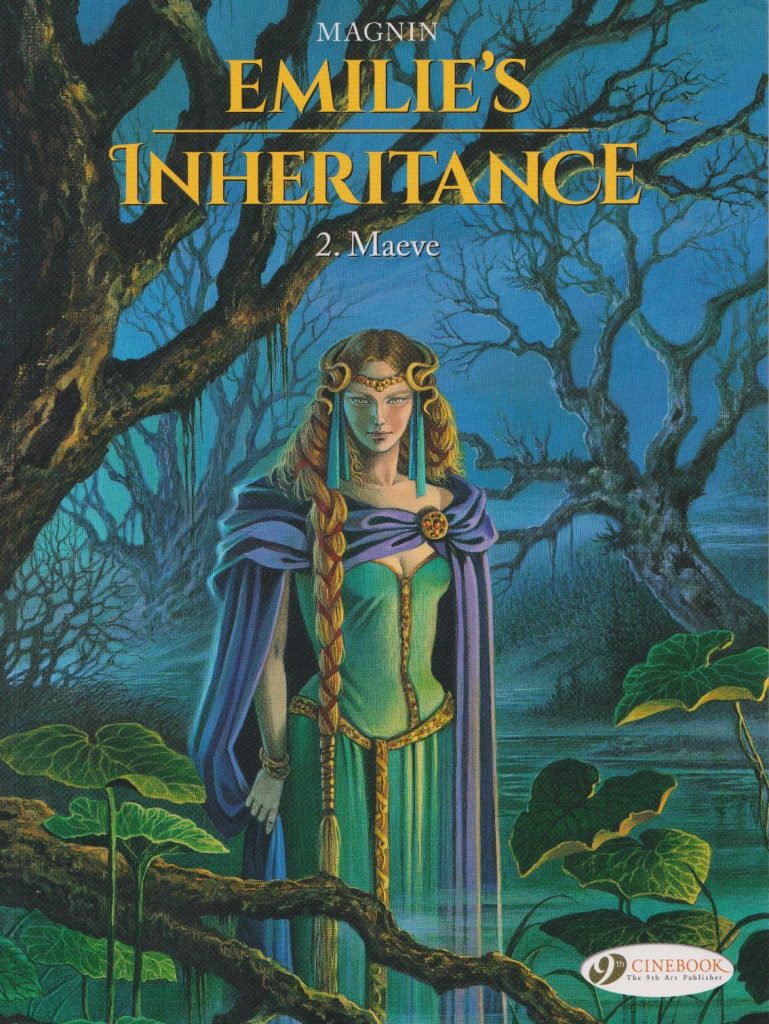Review by Karl Verhoven
A fairytale rooted in period reality about describes Emilie’s circumstances. She’s a penniless exotic dancer who’d just lost her job in 1920s Paris when she learned she’d inherited the Irish castle of a distant ancestor, and that it’s been abandoned for over a century. Advised to just sell it, instead she’s travelled to Ireland to see the property, and The Hatcliff Estate ended with Emilie walking through the gates.
Despite reading her ancestor’s diary of supernatural involvement, Emilie knows far less than readers who’ve been given an insight into what’s happening around her. Several parties are observing her and the property, and some definitely don’t have her best interests at heart. As Maeve opens Florence Magnin has already set up considerable intrigue and mystery. The first surprise here is that the castle may have been abandoned by Emilie’s ancestor a century previously, but it remains occupied.
The immediate attraction of Emilie’s Inheritance is the art, which combines a fantasy sheen with well realised period details, allowing for the castle’s decorations and furnishings being considerably behind the present day of the 1920s. Personality, nature and intent are all meticulously conveyed, with Magnin’s colouring an essential part, the pages swathed in green reflecting the landscape. The fantasy elements are underplayed, yet visually engaging.
Emilie’s not one for resisting an opportunity, even when it’s presented by what would now be considered unacceptable behaviour, and she continues to learn of her distant ancestor’s peculiarities. “He did have strange acquaintances”, she’s told, “mages and sorcerers who he hoped would help him with his obsession of unravelling the estate’s mystery”. Some seem to know more than others about that subject. When Emilie’s warned of a swamp it’s immediately earmarked as a place of later danger, but further mysteries await. Why is it that one of the castle’s current residents so resembles someone we’ve seen in the past? What are the vast constructions underground? And who is Maeve? That question is answered here, and it turns out we’ve seen her before as the source of a fortune.
This is an even better slice of gothic mystery than the first volume. Emilie witnesses the impossible and we see even more of it. There’s an entire industry of romanticising Irish legends and the countryside, but Magnin’s graphic novel form and her imagination ensure this stands above. The Exile is next.





